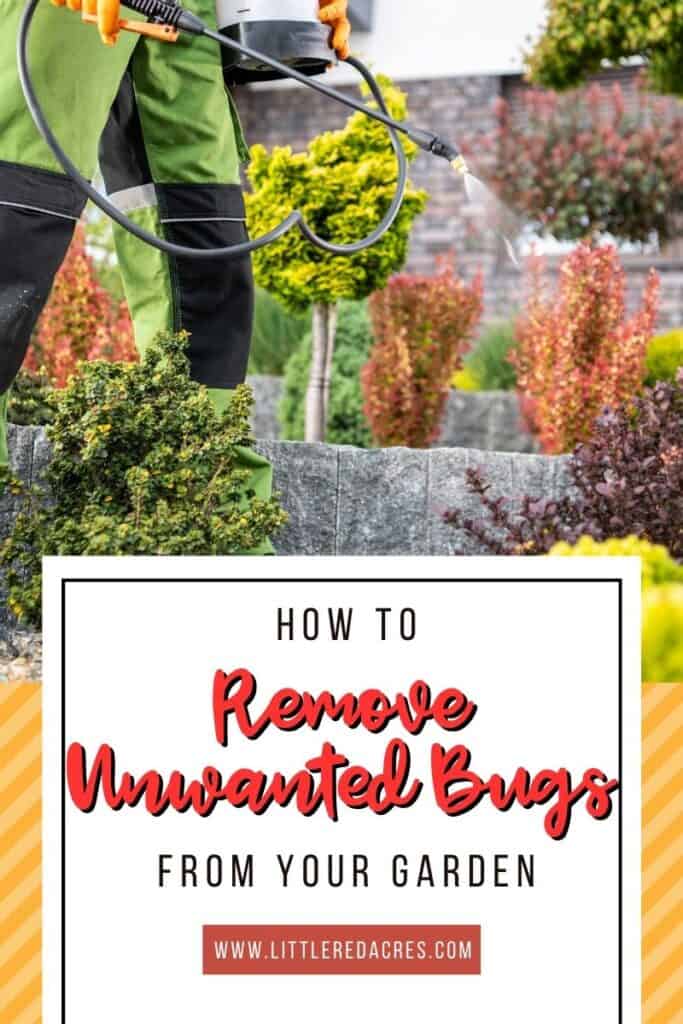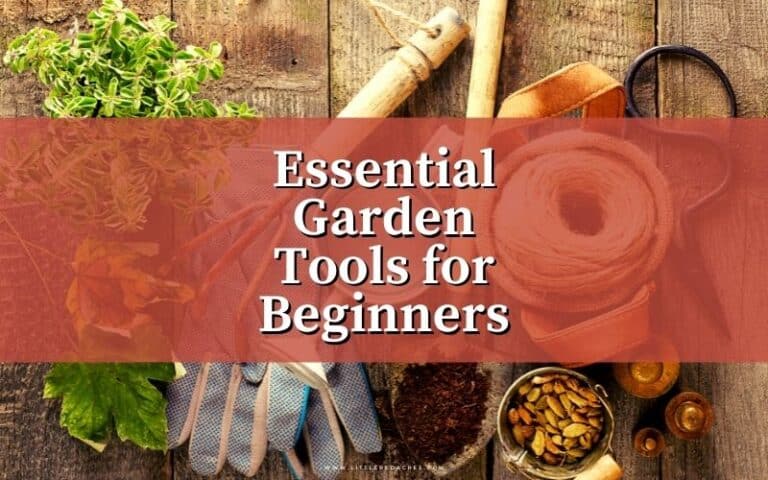How to Remove Unwanted Bugs from Your Garden
Having a garden can be incredibly rewarding, but it's not always easy. One of the biggest challenges gardeners face, after droughts, is dealing with unwanted bugs. These pests can wreak havoc on your plants and make it difficult to grow the beautiful fruits and vegetables you were hoping for.

This post may contain affiliate links, see my disclosure policy for more information.
How to Remove Unwanted Bugs from Your Garden
There are several things you can do to remove unwanted bugs from your garden. Here are some tips to help you get started:
Identify the Pest
The first step in removing unwanted bugs from your garden is identifying them. Different pests require different removal methods, so it's important to know exactly what you're dealing with.
There are many resources available online or at your local gardening store to help you identify common garden pests. Ask friends to help you if you are having trouble identifying them. Gardening friends can be the best source of information.
Get updates & freebies delivered to your inbox!
Practice Good Garden Hygiene
One of the best ways to prevent pests from taking over your garden is to practice good garden hygiene. This means keeping your garden clean and tidy, removing dead leaves and debris, and making sure your plants are well-watered and fertilized.
Pests are more likely to invade an unhealthy garden, so keeping it in good condition can help prevent infestations.
Use Natural Remedies
Once you've identified the pest, there are many natural remedies you can use to remove them.
For example, you can use neem oil, which is a natural insecticide, to kill many types of bugs. You can also use garlic or pepper spray to repel pests.
You could also try, and I highly recommend, companion planting to attract beneficial insects that will eat the pests.
Remember, not all insects are pests. Some are helpful in your garden.

Natural Remedies for Garden Pests
Say goodbye to unwanted garden pests with these effective and eco-friendly solutions. Discover natural ways to protect your plants today!
Vegetable Oil Spray
Here's how to make it: simply mix one cup of vegetable oil with one tablespoon of mild soap and shake it up. When you're ready to use it, add two teaspoons of the oil mixture to one quart of water, give it a good shake, and then spray it directly on the affected areas of your plants.
The oil in the mixture will coat the insects' bodies and block their pores, effectively suffocating them. It's a natural and effective way to get rid of those little pests.
It's a great way to get rid of pesky insects like aphids, mites, and thrips without harming your plants or the environment.
Soap Spray
All you need is one and a half teaspoons of mild liquid soap mixed with a quart of water. Once you've got your mixture, just spray it directly onto the infected parts of your plants.
This natural method is just as effective as using harsh chemicals, and you can apply it whenever you need to. Just remember not to spray it during the hottest part of the day – early mornings or evenings are the best time. Give it a try and let us know how it works for you!
This is also effective for controlling mites, aphids, whiteflies, beetles, and other hungry little insects.

Neem Oil Spray
As mentioned before to use neem oil as an insecticide, simply follow the instructions on the bottle or make your own mixture of two teaspoons of neem oil, one teaspoon of mild liquid soap, and one quart of water. Shake it up and spray it on the affected foliage.
You can even use it as a preventative measure by spraying the leaves of plants that are often targeted by pests. Give it a try and watch your plants thrive!
This is a powerful natural insecticide, capable of disrupting the life cycle of insects at all stages (adult, larvae, and egg), making it a great resource for the organic gardener.
Chile Pepper Spray
You can make a basic chile spray by mixing one tablespoon of chile powder with one quart of water and a few drops of mild liquid soap. This mixture can be applied directly to the leaves of any affected plants.
If you prefer to use fresh chile peppers, simply blend or puree a half cup of peppers with one cup of water. Then, add one quart of water and bring the mixture to a boil. Once cooled, strain out the chile material and add a few drops of liquid soap. Voila! You now have your very own chile spray to use as needed.
It can be easy to take care of your garden and keep the pest away as long as you stay on top of everything. Treat them at the first sign of them so they don't get a chance to do much damage to your garden.







